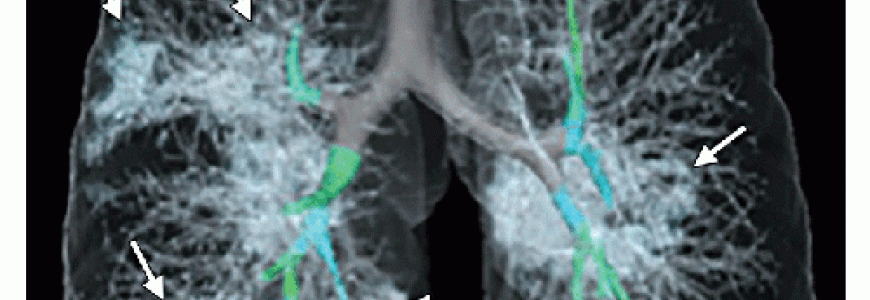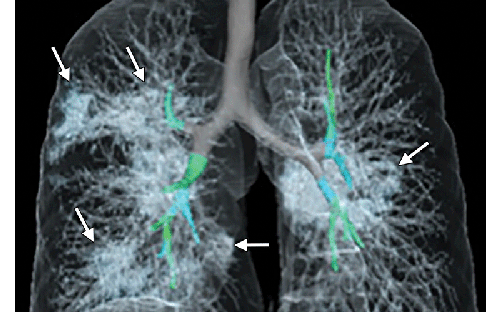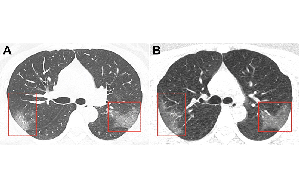
Coronavirus Effect on the Lungs - RSNA
Radiologists Describe Coronavirus Effect on the Lungs - RSNA
On Dec. 31, 2019, the World Health Organization (WHO) learned of several cases of a respiratory illness clinically resembling viral pneumonia and manifesting as fever, cough, and shortness of breath. The newly discovered virus emerging from Wuhan City, Hubei Province of China, has been temporarily named “novel coronavirus” (2019-nCoV). This new coronavirus belongs to a family of viruses that include Severe Acute Respiratory Syndrome (SARS) and Middle East Respiratory Syndrome (MERS).
The outbreak is escalating quickly, with hundreds of thousands of confirmed 2019-nCoV cases reported globally. On Jan. 30, the U.S. reported the first confirmed instance of person-to-person spread of the virus.
Early disease recognition is critical not only for prompt treatment, but also for patient isolation and effective public health containment and response.
RSNA Resources
- Radiology is publishing studies and commentaries about coronavirus in a Special Focus section.
- Radiology published a study online, CT Manifestations of Two Cases of 2019 Novel Coronavirus (2019-nCoV) Pneumonia, from Affiliated Taizhou Hospital of Wenzhour Medical University, Linhai, Zheijiang Province, China, demonstrating the change in the course of disease over time through CT.
- Radiology published a study online, Emerging Coronavirus 2019-nCoV Pneumonia, from Shanghai Public Health Clinical Center, China, detailing the clinical, laboratory and imaging findings of 51 patients with 2019-nCoV pneumonia who underwent thin-section CT.
- Radiology published a special report online, CT Imaging Features of Wuhan Coronavirus Infection (2019-nCoV), a retrospective case series from Mt. Sinai, New York, which characterizes the key chest CT imaging findings in 21 patients admitted to three hospitals in three provinces in China, from Jan. 18-27, 2020. The study will familiarize radiologists and clinical teams with the imaging manifestations of2019-nCoV.
- Accompanying the special report is a commentary Chest CT Findings in 2019 Novel Coronavirus (2019-nCoV) Infections from Wuhan, China: Key Points for the Radiologist, by Jeffrey P. Kanne, MD, from the University of Wisconsin School of Medicine and Public Health, Madison. Listen to the Radiology podcast with David A. Bluemke, MD, PhD, editor of Radiology, who discusses the commentary and recent information about 2019-nCoV.
Images in Radiology has published two online features:
2019 Novel Coronavirus (2019-nCoV) Pneumonia. Physicians from Hunan Provincial People’s Hospital, First Affiliated Hospital of Hunan Normal University, Changsha, China, share the chest CT images of a 41-year-old woman with a travel history to Wuhan, China. Laboratory examinations and chest radiographs were negative. Chest CT showed multifocal ground-glass opacities in the perihilar and subpleural regions of both lungs, a common finding of 2019-nCoV–infected pneumonia.

Images in a 41-year-old woman who presented with fever and positive polymerase chain reaction assay for the 2019 novel coronavirus (2019-nCoV). Three representative axial thin-section chest CT images show multifocal ground glass opacities without consolidation. Three-dimensional volume-rendered reconstruction shows the distribution of the ground-glass opacities (arrows). See also the three-dimensional movie.
CT Imaging of the 2019 Novel Coronavirus (2019-nCoV) Pneumonia. Physicians from The First Hospital of Lanzhou University, Lanzhou, China, share the chest CT images of pneumonia infected with 2019-nCoV and discuss their findings, including the appearance of multiple ground-glass opacities in bilateral lungs, which is one of the common findings of 2019-nCoV.

CDC Information
Chinese health officials have reported thousands of infections with 2019-nCoV in China, with the virus reportedly spreading from person-to-person in many parts of that country. Infections with 2019-nCoV, most of them associated with travel from Wuhan, also are being reported in a growing number of international locations, including the United States.
As of Feb. 10, 2020, a total of 40,573 confirmed 2019-nCoV cases have been reported globally and there have been 910 deaths.
The complete clinical picture with regard to 2019-nCoV is still not fully clear. Current symptoms reported for patients with 2019-nCoV have included mild to severe respiratory illness with fever, cough, and difficulty breathing. Coronaviruses can sometimes cause lower-respiratory tract illnesses, such as pneumonia or bronchitis. This is more common in people with cardiopulmonary disease, people with weakened immune systems, infants and older adults. Learn more about the symptoms associated with 2019-nCoV.
CDC has provided Interim Guidance for Health Care Professionals and has issued an updated interim Health Alert Notice (HAN) Advisory to inform state and local health departments and health care providers about this outbreak.
Copyright © 2019 Radiological Society of North America
